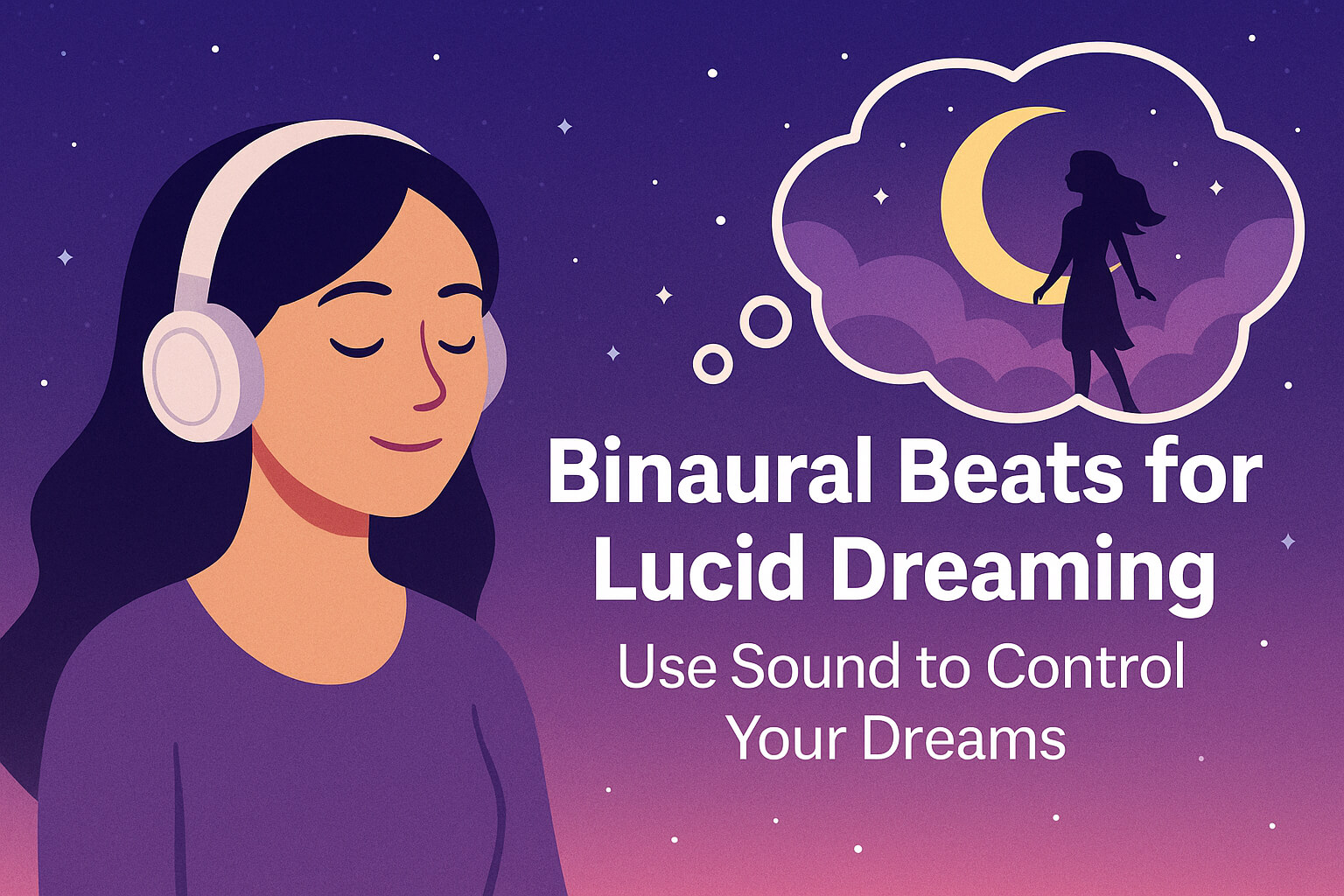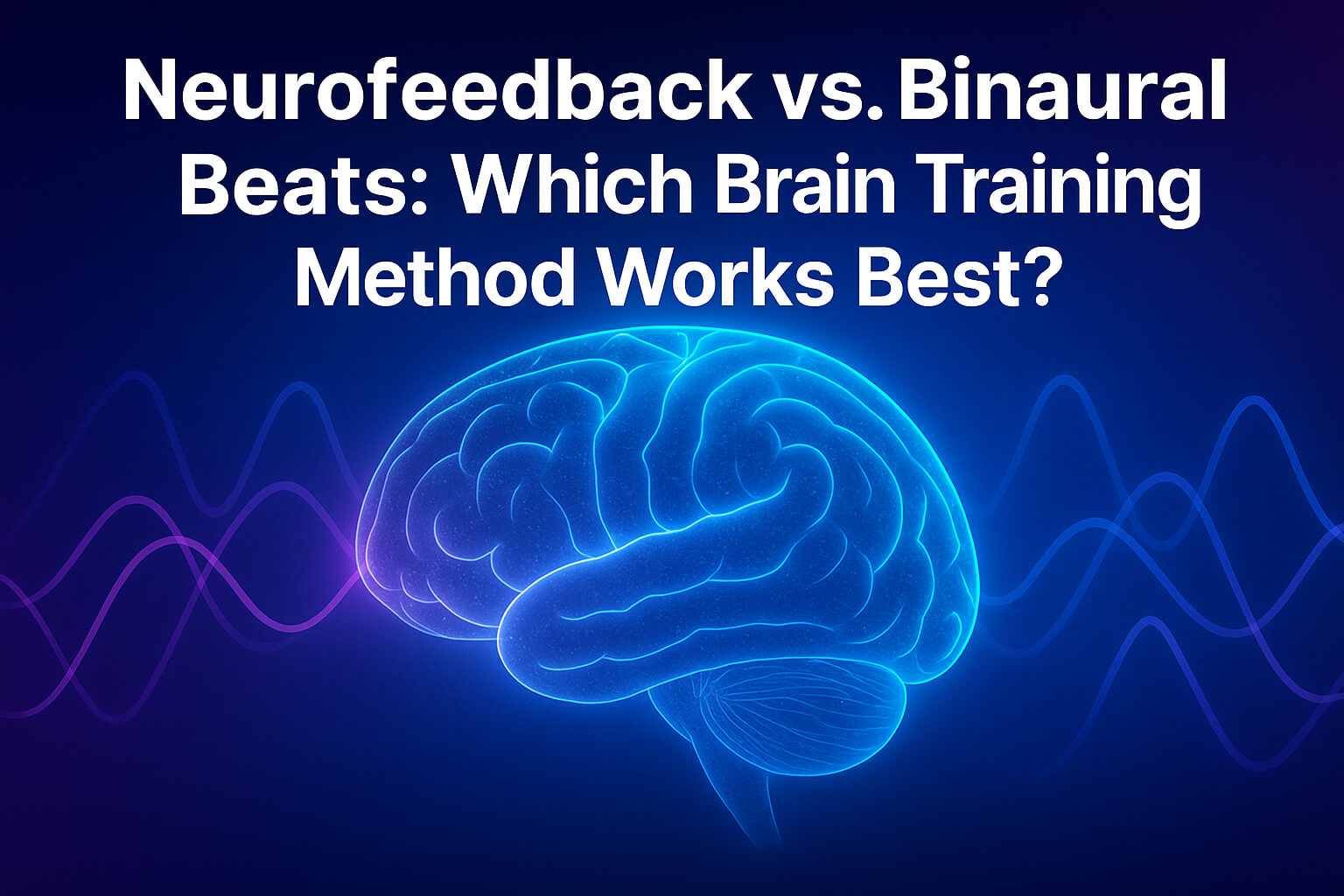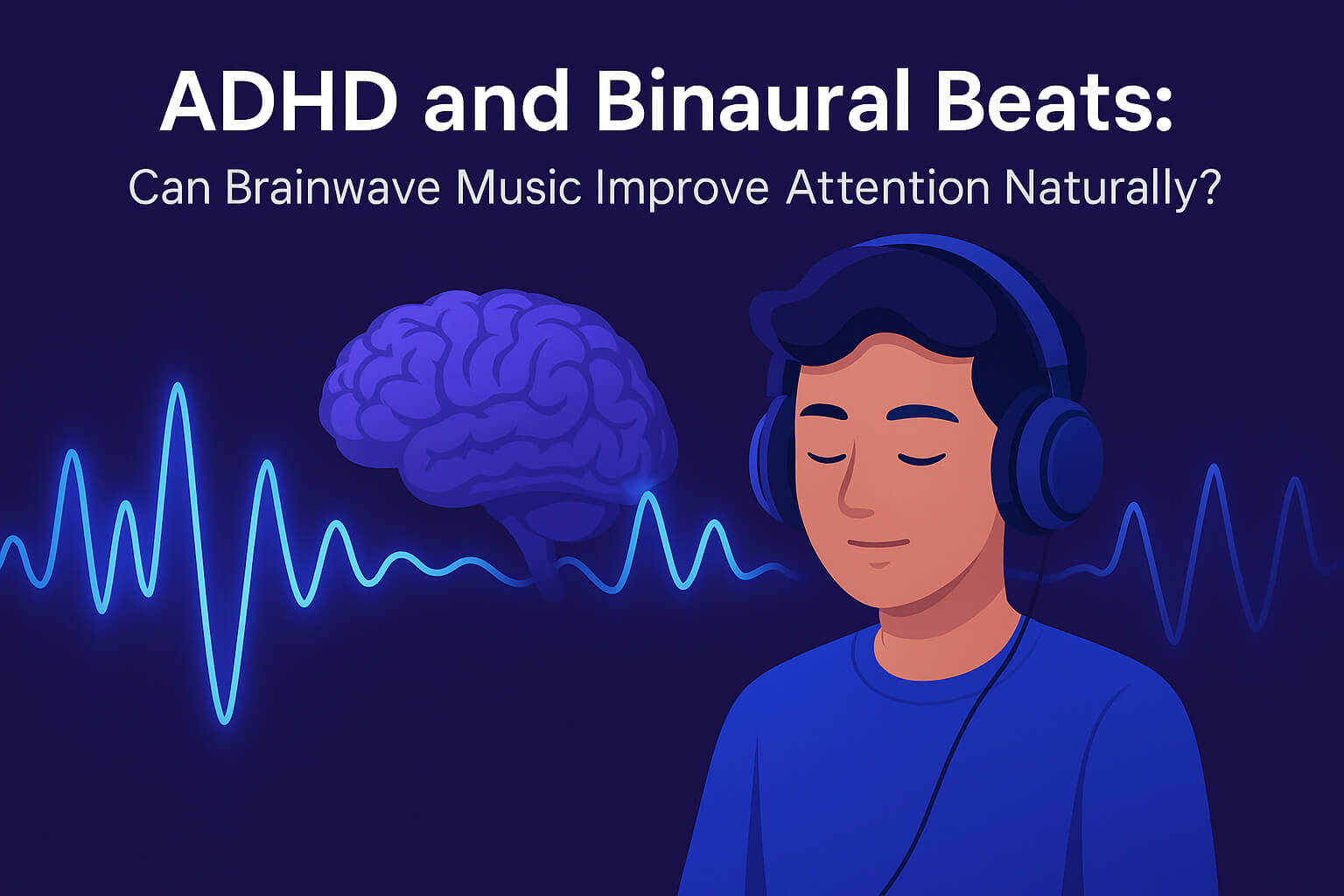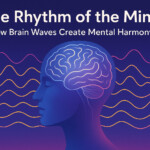Now Reading: Binaural Beats for Lucid Dreaming: Use Sound to Control Your Dreams
- 01
Binaural Beats for Lucid Dreaming: Use Sound to Control Your Dreams
Binaural Beats for Lucid Dreaming: Use Sound to Control Your Dreams

🌙 Introduction
Have you ever realized you were dreaming — and suddenly taken control of the dream itself?
That powerful state of awareness is called lucid dreaming, and it can transform how you experience sleep and consciousness.
Now imagine enhancing that ability using sound.
Binaural beats are special audio frequencies designed to synchronize your brain waves and help you enter the perfect state between wakefulness and dreaming — the sweet spot where lucid dreams begin.
🎶 The Science Behind Lucid Dreaming
Your brain operates at different frequencies depending on your state of mind:
Delta (0.5–4 Hz): Deep, dreamless sleep
Theta (4–8 Hz): Light sleep and vivid dreams
Alpha (8–12 Hz): Relaxed focus and calm alertness
Beta (13–30 Hz): Active thinking and concentration
Lucid dreams occur mainly at the Theta-Alpha border, where the conscious and subconscious mind meet.
Binaural beats targeting this range can help your brain maintain awareness as your body drifts into sleep.
This phenomenon is supported by EEG studies, showing that auditory entrainment can guide the brain into sustained Theta activity — the same state associated with visualization, meditation, and dream recall.
🧠 How Binaural Beats Help You Dream Consciously
When you listen to binaural beats, each ear receives a slightly different frequency (for example, 200 Hz in one ear and 208 Hz in the other).
Your brain detects the difference — 8 Hz — and begins to resonate at that frequency.
That internal rhythm creates a mental gateway between conscious focus and dream imagery.
Over time, the brain learns to sustain this balance, helping you become aware inside your dreams.
Benefits include:
Better dream recall and awareness
Reduced sleep anxiety
Deeper relaxation before sleep
More vivid, controllable dream environments
🌌 How to Use Binaural Beats for Lucid Dreaming
To activate lucid dreaming, follow these simple steps:
Listen Before Sleep:
Play Theta-based binaural beats for 20–30 minutes while lying comfortably in bed.Use the Wake-Back-to-Bed Technique:
Wake up after 5 hours of sleep, stay awake for 20 minutes, then listen again before returning to bed.Set Your Intention:
Before sleeping, tell yourself, “I will realize I’m dreaming.”
This primes your subconscious mind.Keep a Dream Journal:
Write down your dreams each morning. This improves recall and makes lucid dreams more frequent.Relax, Don’t Force It:
The goal is gentle awareness — let the frequencies guide your brain, not control it.
💫 Why This Works
Lucid dreaming isn’t a fantasy — it’s a trainable mental skill.
Binaural beats simply provide the rhythm your brain needs to access that skill faster.
When Theta and Alpha waves synchronize, the default mode network of your brain (responsible for imagination and introspection) becomes active.
That’s why dream imagery feels sharper and more controllable.
Over time, this practice strengthens your connection to your subconscious mind — enhancing intuition, creativity, and emotional clarity even while awake.
🌠 Final Thought
Binaural beats for lucid dreaming are more than a tool — they’re a bridge to self-awareness.
Each night becomes an opportunity to explore your inner world, reshape fears, and awaken creativity on a deeper level.
When your mind learns to dance between waking and dreaming, you don’t just dream — you evolve.














